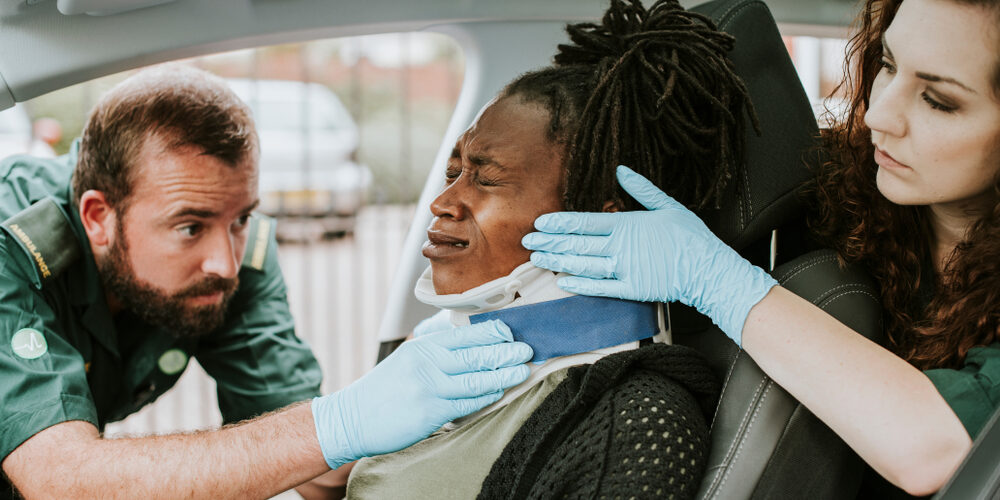Injuries caused by and during car accidents can range in severity. A whiplash injury is a common but potentially serious injury most often associated with car accidents such as auto collisions. Getting whiplash can be both painful and debilitating, so it is important to be able to recognise the cause when it comes to claiming from insurance. In order to better understand and go about claiming compensation, find out about more this here.
However, if you are looking to determine what exactly a whiplash injury is and how to identify one, keep reading. Here, we will discuss how these injuries come about in the body, what symptoms you can commonly expect, and how best to treat them.
How does a whiplash injury occur?
Although whiplash is often associated with car accidents, you can obtain one through other forms of forceful and sudden impact that causes a rapid back and forth movement of the neck. When the neck flexes and extends quickly and intensely, a number of structures in the neck can become damaged. Trauma to your discs, ligaments, nerves, and muscles can result in a painful and frustrating whiplash injury.
These injuries are more often than not obtained during car accidents where collision to the rear-end of your car causes a forceful and violent jolting of the head. The reason for this is that although your seatbelt can hold your body in place, your neck is often left unsupported. The lower neck bones are forced into a position of hyper extension, while the upper bones are flexed. When the neck is jolted forcefully from the back, the soft tissues of the neck are damaged through this motion.
However, many kinds of car accidents can cause this ailment, and it is important to look out for the symptoms following an accident.
What are the symptoms and effects of a whiplash injury?
Often, it can take around 24 hours for the full effects of a whiplash injury to become noticeable in the body. Due to the adrenaline released during a crash, the severity of your symptoms may not become clear until hours, or even days, later.
However, the following symptoms may be immediate – there is no hard and fast rule on when whiplash symptoms occur and how extreme they may be. If you begin to experience the following after a car accident, it is likely you have obtained a whiplash injury:
- A pain and tightening in the neck, shoulders, and back
- Stiffness and tenderness in the neck
- Muscle spasms
- Nausea and fatigue
- Visual disturbances, dizziness, and a ringing in the ears
- Decreased range of motion
- Headaches that spread to the jaw region and general jaw pain
Because magnetic resonance imaging (MRI) and computed tomography (CT) scans cannot always show the presence of a whiplash injury, experiencing the above symptoms remains the best way to determine the presence of this injury. This is because these tests cannot always pick up on the small but vital structures that have been damaged. Often, a small vessel can tear during an accident, resulting in inflammation, swelling, and considerable pain and discomfort.
It is therefore important that you are able to recognize these symptoms as quickly as possible. While these injuries can generally be treated with anti-inflammatories and muscle relaxers, they can and often do affect one’s quality of life and ability to function.
Many people suffer a lack of productivity as a result of the headaches and pain associated with these injuries, and sick leave is often required. In particularly bad cases, a failure to access the proper treatment and care necessary after sustaining one of these injuries can result in “whiplash associated disorders” such as depression, anxiety, and insomnia.
What are the best ways to treat a whiplash injury?
Once you have consulted with a doctor on your whiplash injury, you will most likely be prescribed medicines such as anti-inflammatories and muscle relaxers in order to help to ease the pain and tension. There are, however, things you can do at home to ensure fast and effective alleviation of symptoms.
While whiplash injuries are often associated with the patient wearing a soft cervical collar, many studies have shown that immobilisation can actually harm rather than help your cause. What you can do to help yourself at home is engage in an early range of motion.
Gentle yet effective exercises include rolling the shoulders, gradually rotating the neck side to side, and moving the neck forwards and backwards. These exercises are intended to help you to regain your range of motion, but are not recommended if they result in any excess pain. You may also find that your medical treatment includes physical therapy, where a professional can help you to focus on the best ways to alleviate pain and regain motion.
Overall, your main goal is to be able to move your neck normally again and to strengthen the muscles that have been damaged during your whiplash injury. Being as educated as you can on what has happened in and around your neck area can help to prevent any further whiplash associated disorders and debilitation. Remember to be vigilant after an accident and keep a look out for any of the discussed symptoms of whiplash. Early diagnosis and treatment can go a long way in getting you back on your feet and helping recovery along as swiftly and as painlessly as possible.
Found this article useful? Use the links below to share or send
Have you been injured in a Motor Vehicle Accident? Request a free initial consultation via the form below.
"*" indicates required fields








